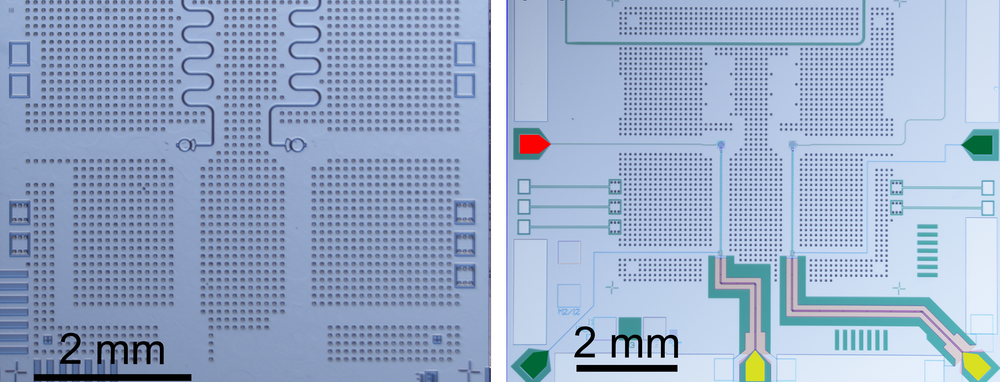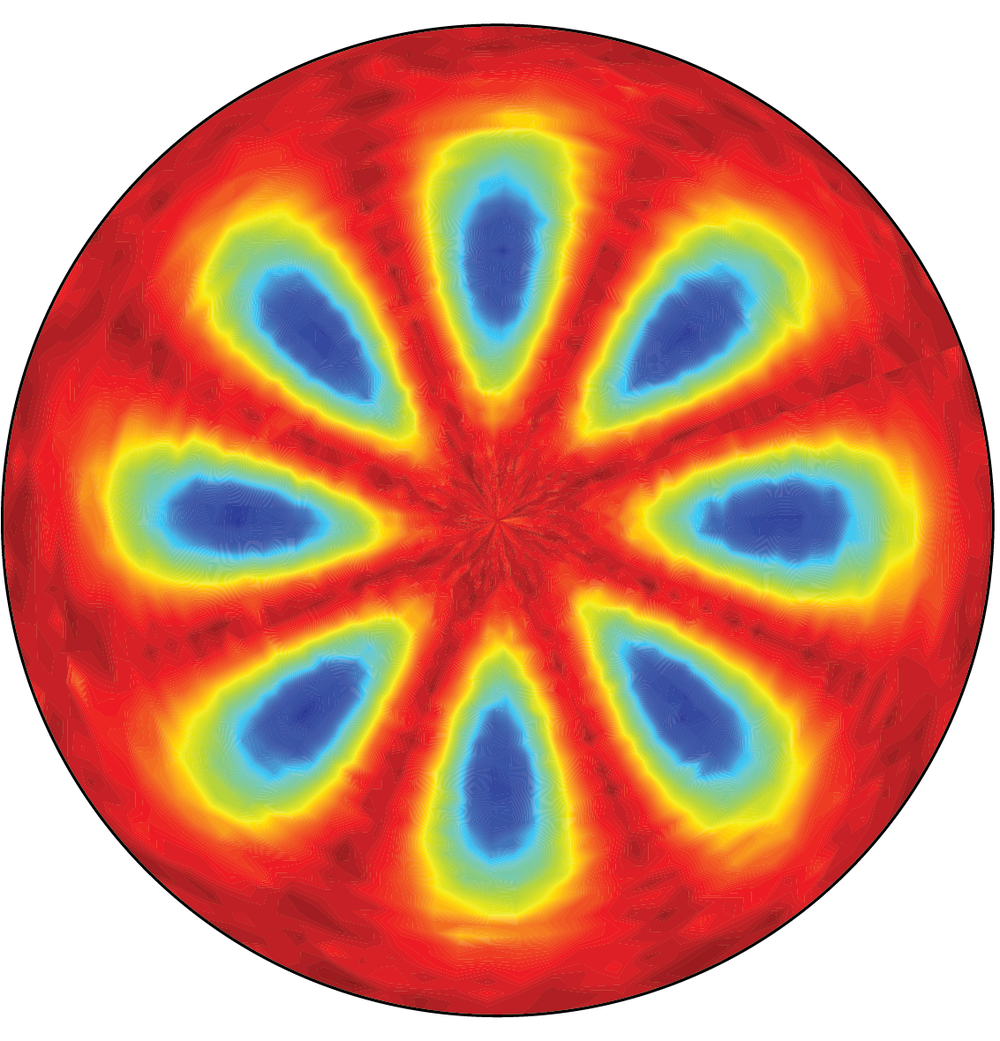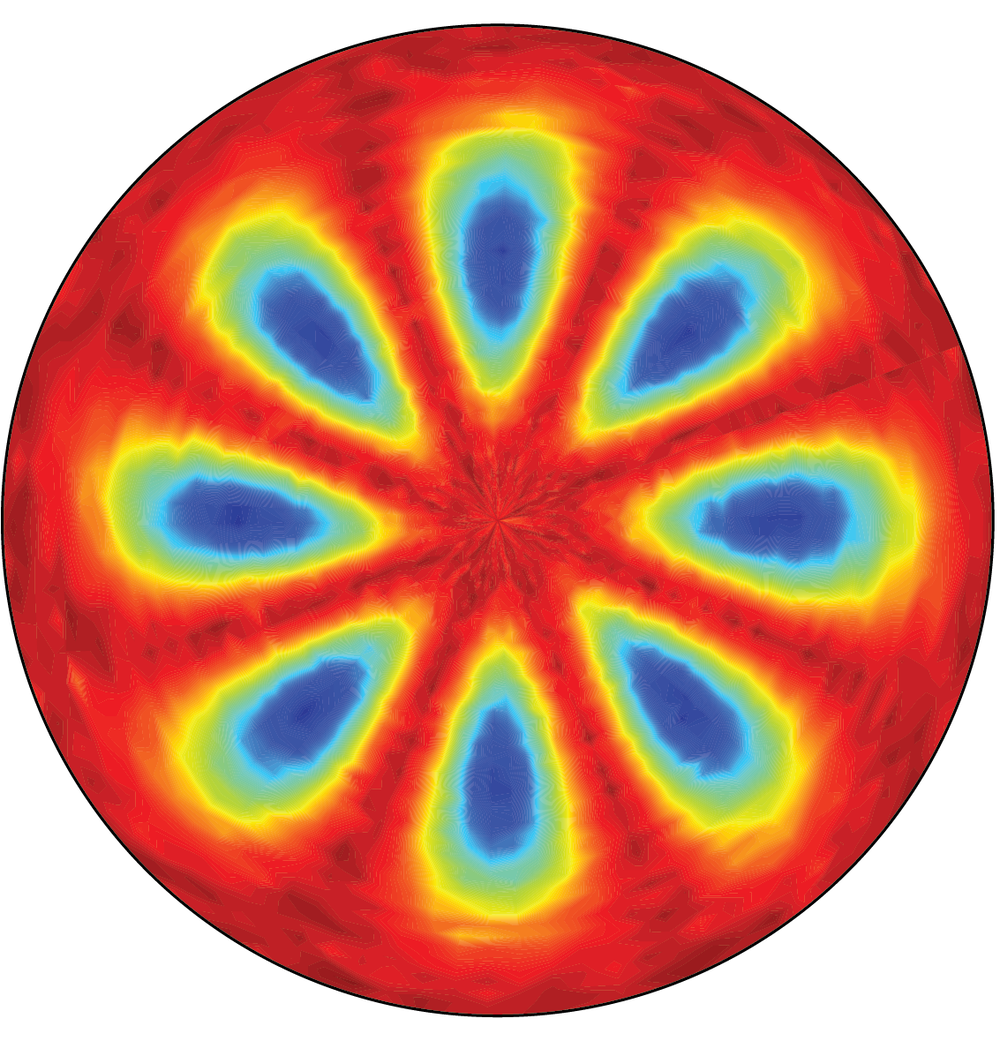Error Rate Reduced for Scalable Quantum Technology
A major obstacle to the development of practical quantum computers is the difficulty of scaling up—making a device with large numbers of quantum bits (qubits) that also gives accurate results in the presence of environmental noise. Now researchers report a significant improvement in the accuracy of a technology that is already known to be much easier to scale up than conventional techniques [1]. This alternative technology uses units of magnetic flux called flux quanta to control conventional superconducting qubits. The reduction in the error rate came from physically separating the control circuits from the qubits. With further refinement, the flux-quanta technology could provide a superior pathway to practical quantum computation.
Many current efforts to carry out quantum logic operations—the basic units of computation—use short microwave pulses to control the qubits. Currently, however, this technology is difficult to scale up beyond 1000 qubits. But the presence of environmental noise requires error-correction methods that rely on large numbers of qubits, perhaps a million or more, for an effective error-correcting system that performs useful computations, according to some estimates.
In one alternative approach to building quantum systems, qubits are controlled using so-called single flux quanta—the smallest units of magnetic flux created in a superconducting device. Researchers believe that this qubit control technique could be more easily scaled up than microwave control because the hardware consumes much less power, which reduces the cryogenic cooling power required—a major concern for larger quantum computing systems.
Any quantum computation involves a sequence of basic logical operations, each of which alters the states of the qubits in specific ways. A key challenge in developing the single-flux-quanta technology is demonstrating an ability to carry out these operations accurately. In previous research, Robert McDermott of the University of Wisconsin-Madison and colleagues demonstrated an accuracy of 91%, a result that others later improved to nearly 98%. Now McDermott, graduate student Chuan-Hong Liu, and their colleagues have taken the technique even further, achieving an accuracy above 99% by placing the device generating the flux quanta on a chip that is physically distinct from the one supporting the qubits upon which the operations are performed. Liu says that the physical separation reduces interference between the flux pulse generator and the qubits.
To demonstrate the improvement, the researchers fabricated two planar chips positioned in parallel in a sandwich-like structure. On the upper chip they built two so-called transmon qubits, each able to store one qubit of quantum information using magnetic flux in a superconducting circuit. The lower chip held two similar superconducting circuits, each forming the basis of a single-flux-quantum generator that could change the states of the qubits on the chip above by sending pulses of flux quanta. The researchers linked the two wafers through a series of narrow indium bridges. This superconducting connection was designed to prevent undesirable physical disturbances produced by the generator—specifically, electron–hole excitations and vibrational quanta called phonons—from influencing the qubits.
In a series of tests, the researchers measured the ability of the flux pulse generators to trigger precise logical operations on the qubits as they varied a wide range of operating parameters. These parameters included the drive current of the generator and its operating frequency. After finding an optimal parameter setting, they tested the accuracy of the pulse generator in driving desired logical operations and averaged the results over trials having a range of initial qubit states. Overall, the team found that the flux generators produced incorrect results in 1.2% of all cases, nearly halving the error rate of 2.1% reported by another group last year [2].
In future work, the team intends to improve the setup to further reduce interference between the chips. “With these optimizations,” Liu says, “we should be able to achieve a gate fidelity of 99.9% or even 99.99% with an optimized sequence of pulses.”
“This paper is a great achievement,” says quantum information specialist Frank Wilhelm-Mauch of Saarland University in Germany. He adds that McDermott and colleagues’ earlier results demonstrated that the technique could work in principle if the pulse generator’s disturbances of the qubit could be sufficiently diminished. “By putting the generator and qubit on different chips, they have reduced this problem.”
–Mark Buchanan
Mark Buchanan is a freelance science writer who splits his time between Abergavenny, UK, and Notre Dame de Courson, France.
References
- C. H. Liu et al., “Single flux quantum-based digital control of superconducting qubits in a multichip module,” PRX Quantum 4, 030310 (2023).
- L. Howe, “Digital control of a superconducting qubit using a Josephson pulse generator at 3 K,” PRX Quantum 3, 010350 (2022).







